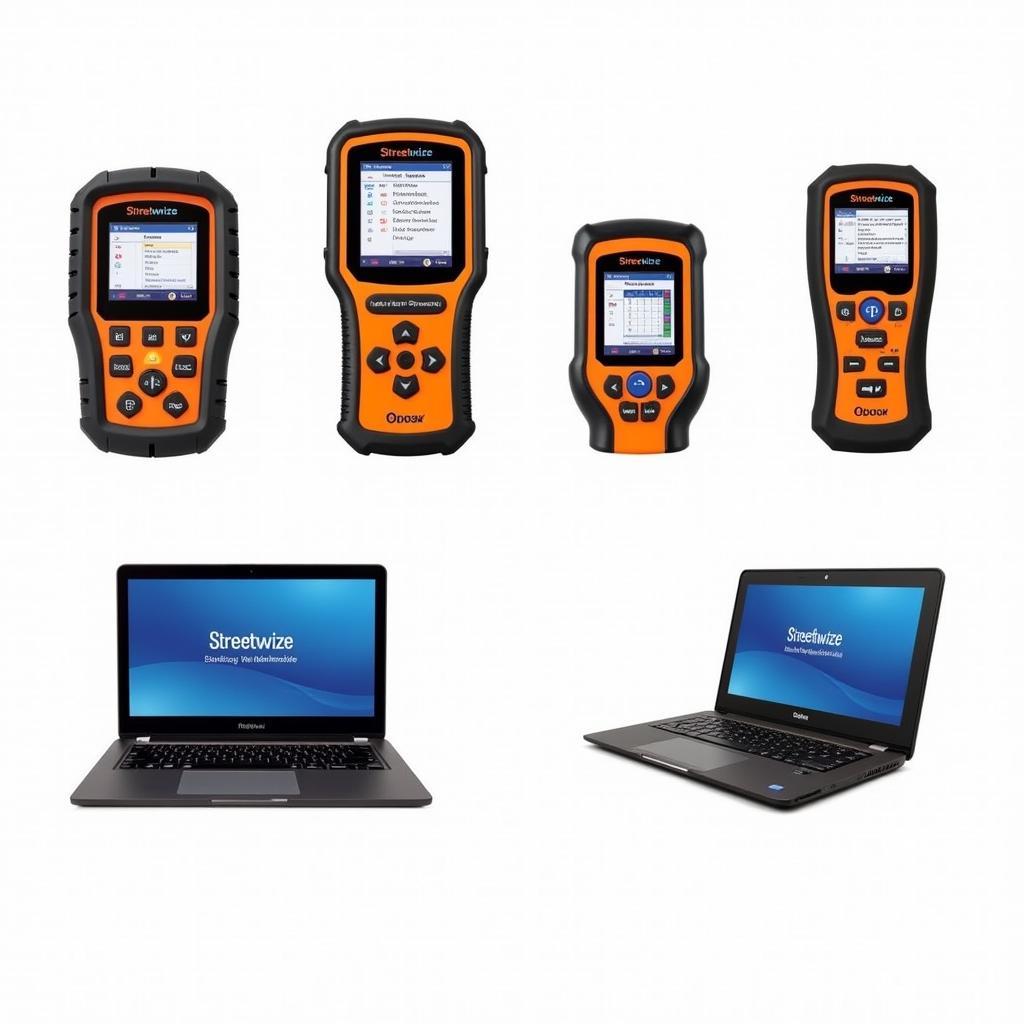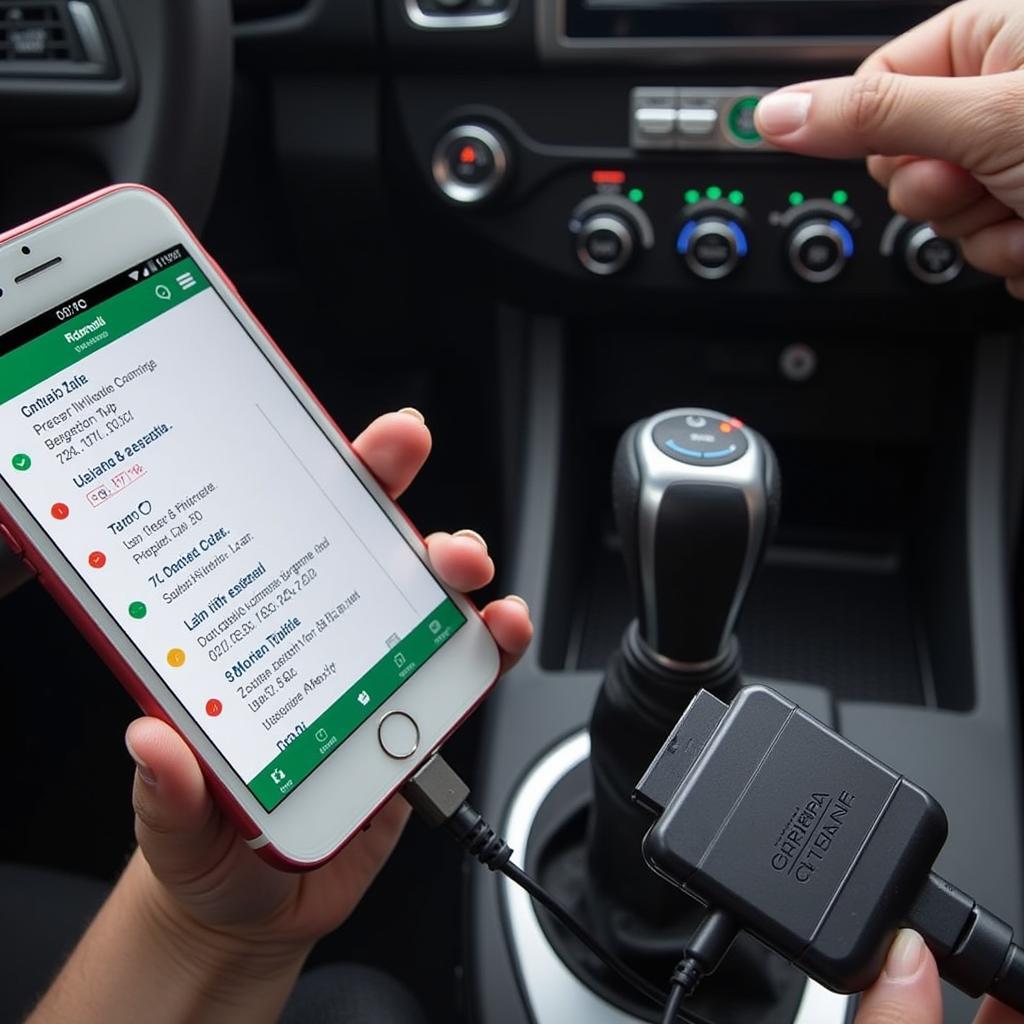In the increasingly digital age of vehicles, where intricate networks of sensors and modules govern everything from engine performance to comfort features, having the right tools to diagnose problems is crucial. This is where Network Diagnostics Tools come in, providing a window into the electronic soul of your car.
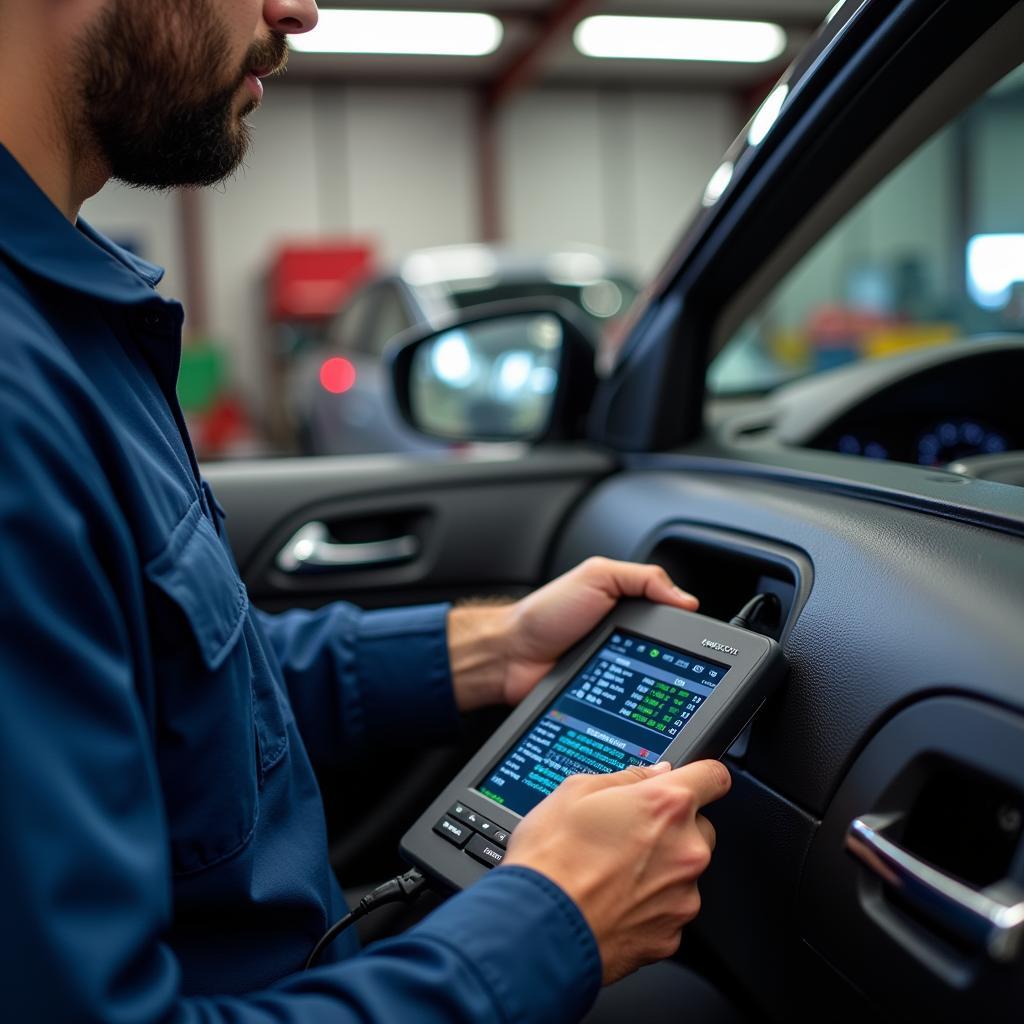 Mechanic Using Network Diagnostics Tools
Mechanic Using Network Diagnostics Tools
Why Network Diagnostics Tools Are Essential
Modern cars are essentially computers on wheels, relying on complex communication networks to function correctly. These networks, often referred to as CAN (Controller Area Network) bus systems, transmit data between various modules, ensuring everything works in harmony. When a problem arises, pinpointing the source can be like finding a needle in a haystack without the right tools. This is where car electrical diagnostic tools prove invaluable.
These tools allow you to:
- Read and interpret fault codes: These codes, stored in the vehicle’s computer, act as breadcrumbs, leading you to the source of the problem.
- Monitor live data streams: This allows you to see what’s happening in real-time within the various systems, aiding in diagnosis.
- Perform actuator tests: These tests can activate specific components, like solenoids or motors, to verify their functionality.
- Program and configure modules: This is especially important when replacing a faulty module, ensuring it integrates seamlessly with the vehicle’s network.
Types of Network Diagnostics Tools
There’s a wide range of network diagnostics tools available, catering to different needs and budgets. These include:
1. Basic Code Readers: These entry-level tools can read and clear basic fault codes, making them suitable for DIY enthusiasts.
2. Advanced Scan Tools: Offering more functionality than basic code readers, these tools can access multiple vehicle systems, provide live data, and perform some actuator tests. They are commonly used by independent mechanics.
3. OEM (Original Equipment Manufacturer) Tools: These are manufacturer-specific tools, offering the most comprehensive diagnostic capabilities for a particular car brand. While they are the most expensive, they are indispensable for dealerships and specialized repair shops.
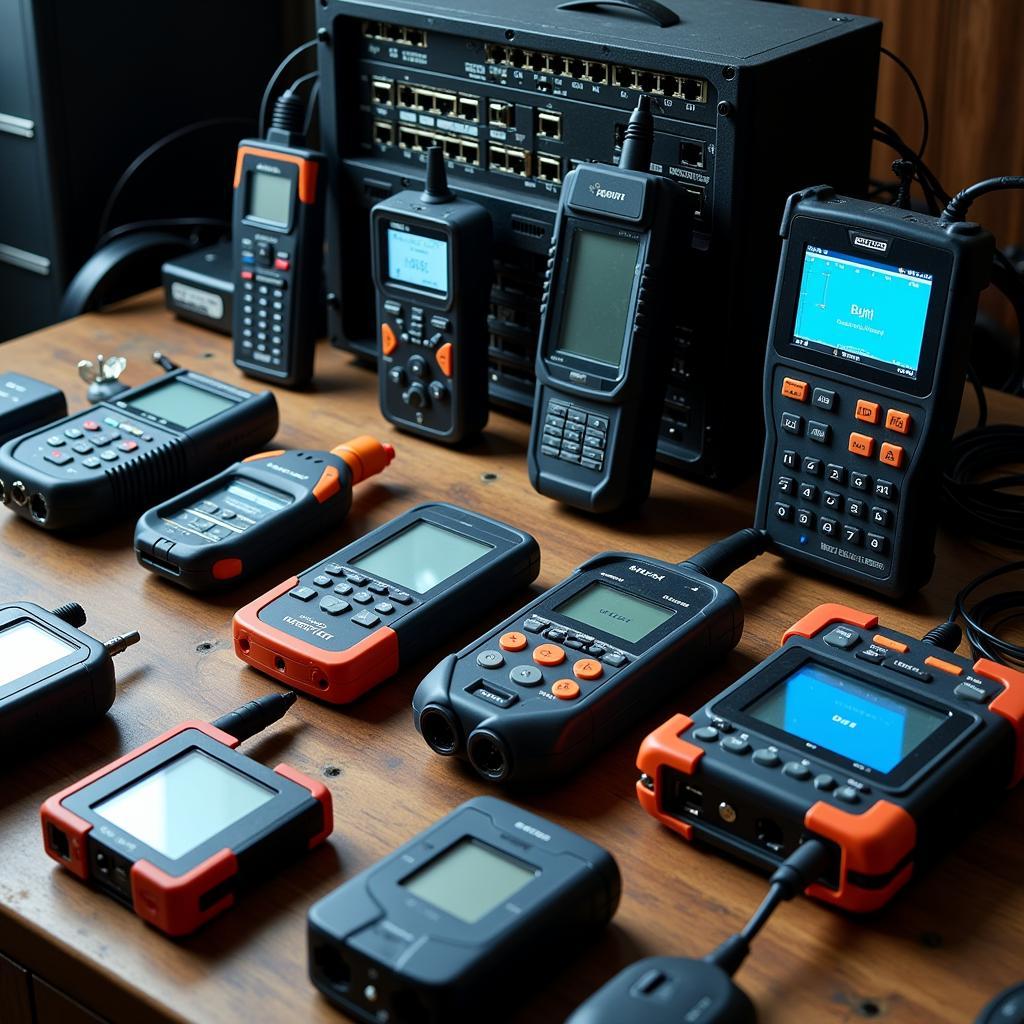 Various Network Diagnostics Tools
Various Network Diagnostics Tools
Choosing the Right Tool: Factors to Consider
Selecting the right network diagnostics tool depends on your specific needs and budget. Consider the following:
- Vehicle Compatibility: Ensure the tool supports the make, model, and year of your vehicle or the vehicles you work on.
- Functionality: Determine the features you need, such as code reading, live data, actuator tests, and module programming.
- User Friendliness: Look for a tool with an intuitive interface and clear instructions.
- Updates: Software updates are crucial for maintaining compatibility with newer vehicle models and accessing the latest features.
Beyond Cars: Network Diagnostics Tools in Other Applications
While commonly associated with automotive diagnostics, network diagnostics tools are also used in various other industries:
- IT and Networking: Tools like the brother network diagnostic tool help troubleshoot network connectivity issues in homes and offices.
- Mobile Device Repair: Technicians use tools like the apple ios diagnostics tool to diagnose and repair software and network-related problems in smartphones and tablets.
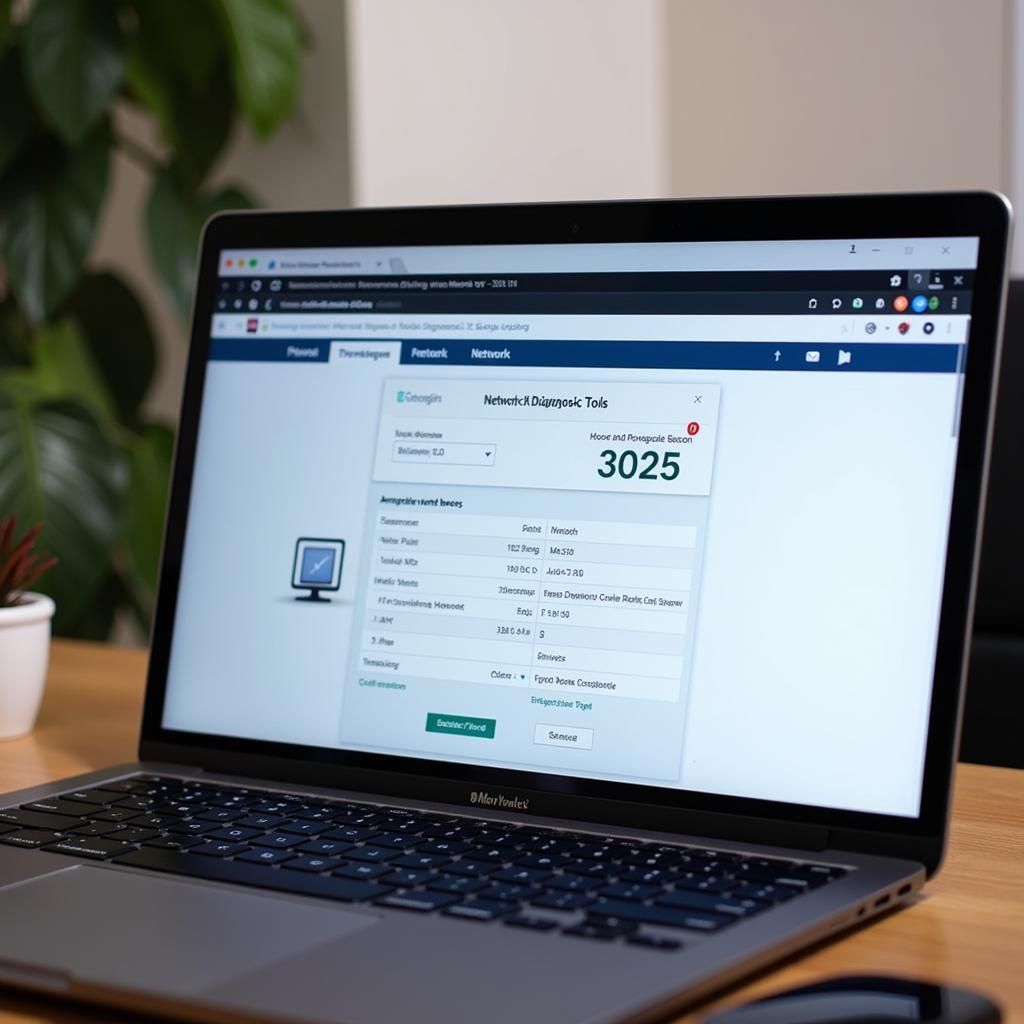 Network Diagnostics Tool on Laptop Screen
Network Diagnostics Tool on Laptop Screen
The Future of Network Diagnostics
As vehicles become increasingly sophisticated, so too will the tools used to diagnose them. We can expect to see:
- Cloud-based diagnostics: Allowing for remote diagnostics and over-the-air software updates.
- Artificial intelligence (AI): AI-powered tools will be able to analyze complex data and provide more accurate diagnoses.
- Augmented reality (AR): AR technology can overlay diagnostic information onto the real world, assisting technicians in repairs.
Conclusion
Network diagnostics tools have become essential for anyone working on modern vehicles. From DIY enthusiasts to professional mechanics, these tools provide the insights needed to understand and repair complex electronic systems. As technology continues to evolve, network diagnostics tools will only become more powerful and sophisticated, playing a vital role in keeping our vehicles running smoothly.
Need help choosing the right network diagnostics tool for your needs? Contact the experts at ScanToolUS at +1 (641) 206-8880 or visit our office at 1615 S Laramie Ave, Cicero, IL 60804, USA.
FAQs
1. What is the OBD-II port?
The OBD-II (On-Board Diagnostics) port is a standardized 16-pin connector found in most vehicles manufactured after 1996. It provides access to the vehicle’s computer and allows diagnostics tools to communicate with it.
2. Can I use any network diagnostics tool on my car?
Not necessarily. It’s crucial to choose a tool that’s compatible with your vehicle’s make, model, and year. Using an incompatible tool can lead to inaccurate readings or even damage to the vehicle’s electronics.
3. Do I need a professional-grade tool for DIY repairs?
For basic DIY repairs, a basic code reader or an entry-level scan tool might suffice. However, for more complex diagnostics or repairs, it’s always best to consult a qualified mechanic.
4. Can network diagnostics tools clear warning lights on my dashboard?
Yes, most network diagnostics tools can clear fault codes and turn off warning lights. However, it’s crucial to address the underlying problem that triggered the warning light in the first place.
5. Are network diagnostics tools only useful for diagnosing engine problems?
No, these tools can diagnose problems across various vehicle systems, including the engine, transmission, airbags, ABS, and more.
6. How often should I use a network diagnostics tool on my car?
While not strictly necessary, it’s a good practice to scan your vehicle for fault codes periodically, even if you haven’t noticed any issues. Early detection can prevent minor problems from escalating into major repairs.


